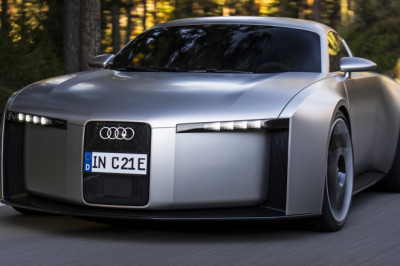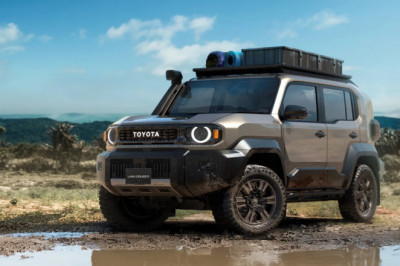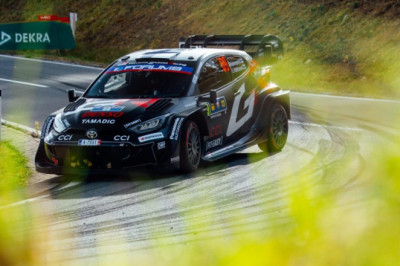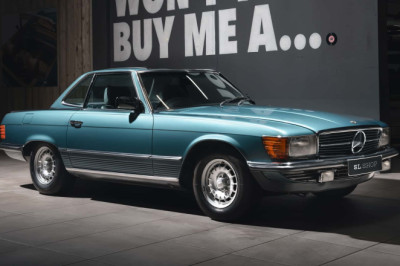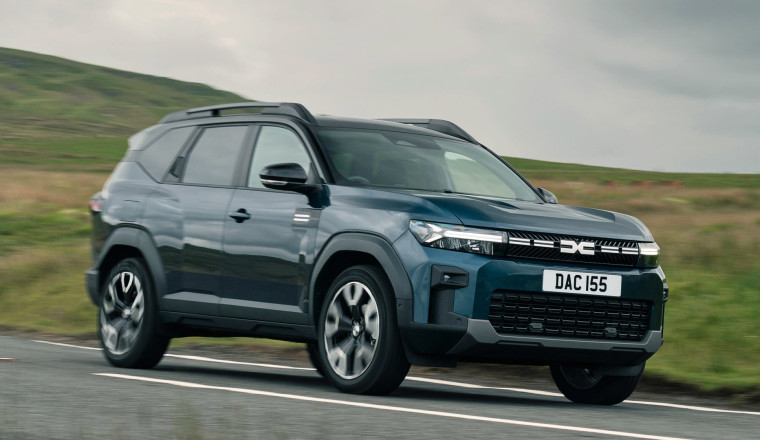
SUVs dominated the UK sales chart in 2024, accounting for seven out of the top 10 best-selling cars of the year. Indeed, the top three – the Ford Puma, Kia Sportage and Nissan Qashqai – were all streets ahead of the rest.
It’s not hard to see why; a family SUV can offer a practical interior, high driving position and running costs that won’t be much different to a mid-sized hatchback such as a Volkswagen Golf.
To help you choose the best family SUV for you in 2025, we have created a list of our favourites. Our choices are presented in alphabetical order.
The X3 sits in the middle of an extensive range of BMW SUVs, bookended by the small X1 and enormous X7. In many ways, it’s the best of the crop, offering the usability and low running costs of the X1, but quality and comfort to rival the X5 and X7. Prices are roughly in line with the Audi Q5, so the choice comes down to badge and driver appeal. If you enjoy driving, there’s a clear winner: the X3.
On the move, the X3 feels like a high-riding BMW 3 Series. Petrol and diesel engines are available, with the separate iX3 available for those who want to go fully electric.
Now into its fourth generation, the current ‘G45’ X3 is bigger than before, with angular styling that divides opinion. The sporty X3 M50 is a particular highlight, with its 3.0-litre turbocharged petrol straight-six generating almost 400hp. Acceleration from 0-62mph takes just 4.6 seconds.
We said: ‘Look beyond the fact that the X3 M50 is not a full-fat BMW M-car, and it makes a strong argument for itself. This is a rapid SUV with very few compromises. It may not be the last word in driver engagement, but it delivers considerable cross-country pace, along with a practical interior.’
Read our review of the BMW X3 M50
From humble Romanian origins, Dacia has blossomed into a genuine automotive success story. It’s now one of the biggest-selling brands across Europe. The Bigster could be, ahem, Dacia’s biggest hit to date, tapping into the mid-size ‘C-SUV’ sector that makes up nearly a quarter of Europe’s car market.
Priced from just over £25,000, the Bigster undercuts most other SUVs on sale, offering space for five and a substantial 677-litre boot. There is a choice of two petrol engines, plus a petrol-electric hybrid that achieves up to 60mpg.
We said: ‘Dacia’s SUV rivals – and there are many of them – should be worried. By adding a dash of style and desirability to a well-proven formula of sensible motoring at affordable prices, the Bigster looks like a winner.
‘Are you really willing to pay £10,000+ more for a comparable car without a “budget” badge? As with the all-conquering Sandero, we suspect many Europeans will reject brand snobbery and vote with their wallets.’
Read our review of the Dacia Bigster
It may share a name with Ford’s classic coupe, but the reborn Capri is a thoroughly modern electric SUV. So, let’s forget any ideas of a direct comparison and focus instead on how the Capri stacks up against family EV rivals.
Beneath that tapering roofline is the same platform that underpins a host of Volkswagen Group products, including the ID.4 and ID.5. However, Ford has given the Capri its own unique character on the road.
The new Capri is pricier than many of its rivals, and commands a premium over the closely related Explorer. Ford will hope the car’s evocative name, sportier handling and shapelier styling will justify the markup.
We said: ‘Like 95 percent of today’s SUVs, the Capri has absolutely no intention of ever going off-road. However, this taller, bulkier body style does have its advantages, as anyone who has squeezed into the ‘+2’ rear seats of a classic Capri will confirm. This time around, the Ford is a full-sized family car, with enough space for lanky teenagers on the rear bench and several suitcases in the boot.’
Read our review of the Ford Capri
The Hyundai Tucson is one of the most distinctive family SUVs on sale. You might not love its bold styling, but you can’t accuse the adventurous Hyundai of playing it safe. Make no mistake, your neighbours will know you’ve bought a new car.
It’s not the bargain family SUV it was previously, but the Tucson comes with a five-year unlimited mileage warranty and a generous level of standard equipment. The entry-level Advance gets 17-inch alloy wheels, dual-zone climate control, rear parking sensors, a reversing camera, a 12.3-inch touchscreen media system with sat-nav, a 12.3-inch digital instrument cluster and front/rear parking sensors.
Upgrading to Premium trim adds more kit, while Ultimate spec nudges the Tucson into luxury territory. Look out for the N Line and N Line S, with styling inspired by Hyundai’s N performance models. A 1.6-litre petrol engine is available in a choice of outputs, and with mild-hybrid or full hybrid technology.
For even lower running costs, check out the plug-in hybrid Tucson, which offers up to 43 miles of electric range – if you remember to plug it in.
The Kia EV3 is one of the latest and best electric SUVs to hit the market. All versions use a single 204hp motor to drive the front wheels, with a choice of 58kWh or 81kWh battery sizes. They offer official ranges of 270 and 375 miles, respectively.
Those are impressive figures, especially for an SUV that costs £33,000 in base trim, although the flagship GT-Line S with an 81kWh battery is just shy of £44,000. All models come with Kia’s seven-year/100,000-mile warranty, backed up by an excellent reputation for reliability.
We said: ‘The Kia EV3 is an accessible and thoroughly well-rounded car that could slot effortlessly into family life. And as such vehicles are now increasingly SUV-shaped, it has become the electric benchmark to beat. It is capable, competent and easy to drive, with a smooth and comfortable ride.’
Read our review of the Kia EV3
No other car manufacturer offers such a bewildering array of SUVs as Mercedes-Benz, so it could be tricky to choose the right one. We’ll cut to the chase: the GLB is one of the most practical and family-friendly SUVs in the range. It also offers better value for money than the pricier Mercedes-Benz GLC.
Squint and it looks a bit like the chunky Mercedes-Benz G-Class, which helps the GLB stand out in a crowded market. It’s actually shorter and narrower than the GLC, but its lofty stance creates an interior that is spacious enough for five adults. You even get a pair of extra seats in the third row. Quality isn’t quite up to the high standards of the GLC, but the price reflects this.
There are four trim levels: Sport Executive, AMG Line Executive, AMG Line Premium and AMG Line Premium Plus. All come with a pair of 10.25-inch screens, which blend together to create one seamless display across the dashboard. Take into account the fact that the entry-level GLB undercuts the basic GLC by around £20,000, and you’ll see why we consider it good value.
The Renault Scenic is back, but not as we know it. Gone are the modest petrol and diesel engines you might remember from your youth – ‘Are we nearly there yet?’ – the current Scenic E-Tech uses a 170hp or 220hp electric powertrain. The former has a 60kWh battery for 260 miles of range, while the latter boasts a 87kWh battery and can travel up to 379 miles between charges.
The three trim levels are labelled Techno, Esprit Alpine and Iconic. Prices range from £37,500 to £45,500, and while that might seem like a lot for a Renault, quality is excellent and you get an impressive amount of equipment for your money.
Thanks to the Scenic’s flat floor, its interior feels incredibly spacious, with enough room for five adults to sit in comfort. There is also 545 litres of luggage space, which is better than many of its rivals. It’s a great electric SUV, but don’t take our word for it; the Scenic E-Tech was good enough to win the European Car of the Year award in 2024, before the new Renault 5 E-Tech stole its crown in 2025.
We could mount a strong case for the Skoda Kodiaq being the best family SUV you can buy. Available with a choice of five or seven seats, even the most basic version offers a long list of standard equipment.
It shares a platform with the Volkswagen Tiguan, and although the level of finish isn’t as polished as the VW, you get more goodies for your money. Prices start from around £38,000, while the flagship vRS with a 265hp 2.0-litre petrol engine costs £52,500.
Don’t be fooled by the evolutionary styling, because the new Kodiaq is a major upgrade on the old model (which also happened to be one of our favourite SUVs). It’s bigger and more practical, and you’ll notice a significant step up in terms of quality.
There are four versions to choose from: SE, SE L, SportLine and vRS. As for powertrains, the pick of the bunch is the plug-in hybrid, which offers an impressive 71 miles of electric range
The Volkswagen Tiguan is one of the most popular family SUVs in Europe, with many buyers prepared to pay a small premium for the VW badge and build quality. It feels a class above its mainstream rivals, even if it can’t quite reach the high standards set by the Audi Q5 and BMW X3.
Don’t be fooled by the attractive price of the entry-level Tiguan; it lacks the kind of creature comforts you’ll want over a three-year PCP finance deal. The Life trim level is more appealing, while Match and Elegance add more luxury to the mix. For more aggressive styling, check out the R-Line and Black Edition models. For seven seats, you’ll need to upgrade to the versatile Tiguan Allspace.
As well as diesel and mild-hybrid petrol engines, the Tiguan is available as a plug-in hybrid for extremely low running costs. The Tiguan eHybrid pairs a 1.5-litre petrol with an electric motor to deliver either 204hp or 272hp. A fully charged battery should provide 71-77 miles of electric range, while CO2 emissions from 9g/km will be great news for company car drivers.
Not many family SUVs are as appealing as the Volvo XC40. It might be the smallest SUV in the Volvo range, but it’s arguably the most charming and attractive of them all. Its chunky styling sets it apart from German rivals, while its interior exudes sophisticated Scandinavian cool.
Despite being on sale since 2017, the XC40 still has plenty going for it. Buyers can pick from mild-hybrid petrol versions with up to 197hp, along with the electric EX40 model, which offers a potential range of 355 miles.
Perhaps the biggest challenge for the XC40, and indeed EX40, comes from within. Volvo’s smaller EX30 electric SUV has proven very popular. We are currently running a long-term test EX30 to discover what it is like to live with.
We said: ‘The Volvo XC40 has deservedly won a string of awards and a legion of admirers. It looks the absolute business, in our opinion, and the interior is brilliantly Swedish. It’s not quite as plush as the XC60 and XC90, but it still feels premium and interesting in a “definitely not German” kind of way’.
Read our review of the Volvo XC40
READ MORE:
Best family hatchbacks to buy in 2025
New Mercedes-Maybach Edition Emerald Isle debuts in Monterey
How to quickly clear hot air from inside your car
Polestar sets new world record with 581-mile electric road trip






